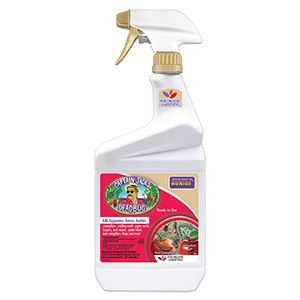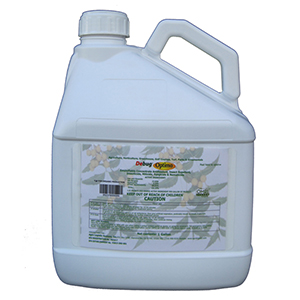Colorado Potato Beetle
 |
Colorado Potato Beetle, Leptinotarsa decemlineata
The adult Colorado Potato Beetle has an oval body that is about 3/8 inch long. Adults overwinter in the soil and are yellow-orange in color with several black stripes down their back. Eggs are an orange/yellow color and approximately ½ inch in length often found fixed in clusters of 10 to 30 on the underside of the leaves. After hatching, larvae are orange/red in color and feed voraciously on plant foliage as they mature. Over the developmental cycle Colorado Potato Beetle larvae grow larger and closer to dark red in color with black spots on the sides of their body. Larvae drop to the ground and pupate there. Depending on the time of the year, adults will either emerge to mate and lay more eggs or remain in the soil to emerge in the spring.
After overwintering, adult Colorado Potato Beetles surface in spring after rain and when the ground temperature has reached 57°F at their hibernation depth. They then feed on young potato leaves or foliage of other host plants such as Eggplant, Tobacco, Tomato and more. After mating, the female immediately begins to lay eggs. The adults and the larvae can partially or totally destroy the foliage of their host plant.
Colorado Potato Beetle Control:
Control can be difficult but is achievable. Multiple methods may need to be used during a growing season:
- During spring, cover plants with Agribon or Harvest Guard to exclude the mobile beetles.
- During the late summer or early autumn and in spring, apply Beneficial Nematodes to control the larvae.
- For the larval through adult stages, Spinosad, the active ingredient in Monterey Garden Insect Spray works to control the Colorado Potato Beetle.
- Beauveria bassiana, the active ingredient in Botanigard, kills both larvae and adults – use either as a soil drench or as a foliar application to the plants.
- Ladybugs and stink bugs are the most effective natural enemies of the Colorado Potato Beetle. We knew those stink bugs would come in handy for something!
- Several organic insecticides provide some control of this beetle: Pyrethrins, AzaMax, and Neem Oil are included in this list.
Don't forget to tend to Cultural Practices that help to reduce the habitat for these pests:
- Mulch with locally sourced material making sure to inspect for pest eggs or other life stages.
- Clean up leaves and debris regularly and thoroughly.
- Plant Cover Crops and Pollinating Plants around your growing area to attract Beneficial Insects.
- Hand-pick the adults when you see them. Some gardeners like to keep a butterfly net on hand to help trap them. Once you have them, dunk them in a pail of soapy water.
-
$28.00–$205.00
-
$30.00–$100.00
-
$27.00–$6,000.00
-
$275.00–$2,495.00
-
$87.00–$939.60
-
-
$9.99–$29.99
-
-
$11.97–$34.99
-
$95.00–$1,026.00
-
$110.00–$1,296.00
-
$125.00–$225.00
-
$80.00–$285.00
-
$260.00–$936.00
-
$73.80–$3,005.00
-
$250.00–$875.00
-
$15.99–$124.49
-
-
$31.49–$58.79
-
$14.99–$144.49
-
$270.00
-
$28.00–$236.00
-
$34.95–$219.99
-
$90.00–$1,020.00
-
$19.95
-
$750.00–$2,700.00





























